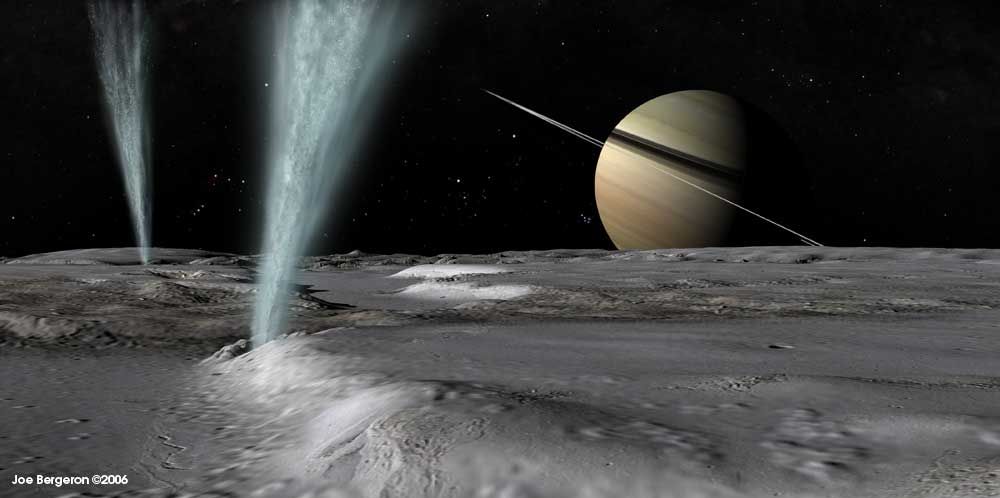Saturn’s Mysterious Moon Could Support Alien Life Thanks to New Discovery
Article by Chris Ciaccia January 24, 2020 (nypost.com)
• Researchers with the Southwest Research Institute, using data from NASA’s Cassini spacecraft, have found an “abundance” of carbon dioxide on Saturn’s moon Enceladus reacting with the moon’s core and subsurface oceans that could potentially create energy sources that might support life. Researcher Hunter Waite reported, “While we have not found evidence of the presence of microbial life in the ocean of Enceladus, the growing evidence for chemical disequilibrium offers a tantalizing hint that habitable conditions could exist beneath the moon’s icy crust.”
• “We came up with a new technique for analyzing the plume composition to estimate the concentration of dissolved CO2 in the ocean,” said researcher Christopher Glein. “This enabled modeling to probe deeper interior processes.” The new technique identifies reactions between the water and the core of the celestial satellite as the source of the complexity. Their findings are published in Geophysical Research Letters.
• Enceladus was first discovered in 1789. Voyagers 1 and 2 conducted “fly-bys” in the 1980s, but not much was known about the “ocean world” moon until NASA’s Cassini spacecraft was launched in 1997 and spent 13 years in Saturn’s orbit studying the planet and its moon satellites. In September 2017, the Cassini plunged itself into Saturn’s atmosphere and found the presence of hydrogen in Enceladus’ atmosphere. In 2018, scientists announced the discovery of complex organic molecules, the “building blocks” for life, on the moon.
• In June, NASA announced the “Dragonfly mission” to explore Saturn’s largest moon, Titan, which also could potentially host extraterrestrial life.
Saturn’s moon Enceladus has an even better chance of supporting extraterrestrial life than previously thought: Researchers have discovered its oceans are more complex than first believed.
The moon’s oceans shoot plumes of carbon dioxide into space, researchers have found, using data from NASA’s Cassini spacecraft. The findings, published in Geophysical Research Letters, point to reactions between the water and the core of the celestial satellite as the source of the complexity, discovered thanks to a new technique the researchers used.
“By understanding the composition of the plume, we can learn about what the ocean is like, how it got to be this way and whether it provides environments where life as we know it could survive,” said Southwest Research Institute (SwRI) researcher Christopher Glein in a statement. “We came up with a new technique for analyzing the plume composition to estimate the concentration of dissolved CO2 in the ocean. This enabled modeling to probe deeper interior processes.”
The Cassini spacecraft intentionally plunged itself into Saturn’s atmosphere in September 2017 after it was launched in 1997 at a total cost of $3.9 billion ($2.5 billion in pre-launch costs and $1.4 billion in post-launch). It spent 13 years circling, studying and taking data of Saturn and its moons.
FAIR USE NOTICE: This page contains copyrighted material the use of which has not been specifically authorized by the copyright owner. ExoNews.org distributes this material for the purpose of news reporting, educational research, comment and criticism, constituting Fair Use under 17 U.S.C § 107. Please contact the Editor at ExoNews with any copyright issue.
